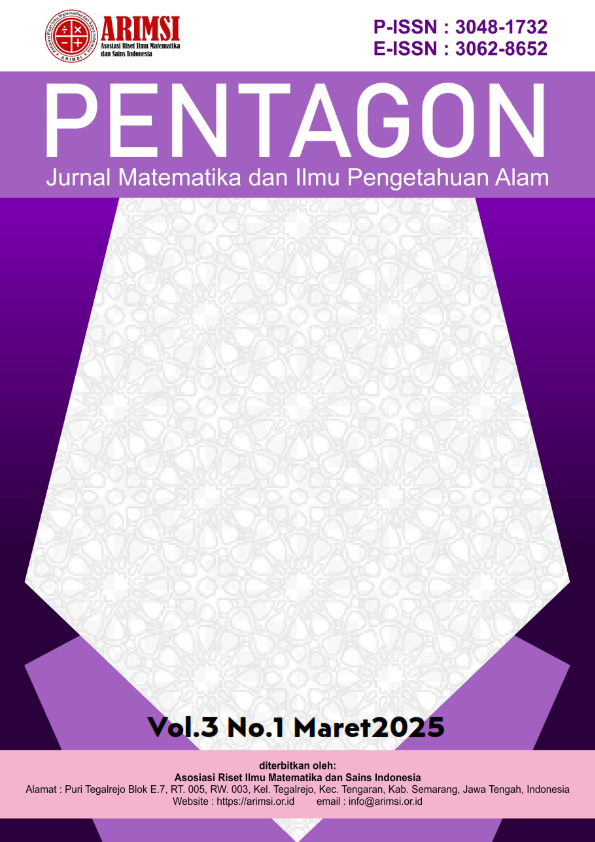Sejarah dan Perkembangan Sistem Bilangan di India
DOI:
https://doi.org/10.62383/pentagon.v3i2.470Keywords:
Indian number system, zero, place value, mathematics, history of mathematicsAbstract
This study discusses the history and development of the number system in India and its influence on the evolution of mathematics worldwide. The Indian number system has evolved since the Indus Valley Civilization and has undergone significant innovations, such as the invention of the number zero by Brahmagupta and the development of the place value system, which forms the basis of the modern decimal number system. This research employs a qualitative method with a library research approach, involving the analysis of various written sources, such as books, academic journals, and historical articles on the Indian number system. The findings indicate that the Indian number system has had a profound impact on the advancement of mathematics, particularly after it was introduced to the Islamic world by scholars such as Al-Khwarizmi, who later disseminated it to Europe, making it the foundation of the numerical system used today. Additionally, the Indian number system contributed to the development of various branches of mathematics, including algebra, calculus, and number theory, and served as the foundation for modern technology, including computers and calculators. Therefore, understanding the history of the Indian number system should be reinforced in mathematics education, accompanied by further research on its applications in contemporary science and technology.Downloads
References
Burton, D. M. (2007). The History of Mathematics: An Introduction. McGraw-Hill.
Boyer, C. B. (1991). A History of Mathematics. John Wiley & Sons.
Dunham, W. (1994). The Mathematical Universe: An Alphabetical Journey Through the Great Proofs, Problems, and Personalities. Wiley.
Gongol, W. J. (2003). The Aryabhatiya: Foundations Of Indian Mathematics. Gongol.Com. http://www.gongol.com
Hakim, A. R. & M. F. (2023). Sejarah Matematika: Perkembangan Bilangan Matematika Empiris. Prosiding Diskusi Panel Nasional Pendidikan Matematika, 80, 471–478.
Hasan, T. H. (2005). Perkembangan Sistem Bilangan Pada Masa Sebelum Islam. Matematika, 1, 1–14.
Heath, T. L. (1921). A History of Greek Mathematics. Clarendon Press.
Ifrah, G. (2000). The Universal History of Numbers: From Prehistory to the Invention of the Computer. Wiley.
Johanes, & Bronkhorst. (2001). ’ ’Panini and eucl id: reflections on Indian Geometry. Journal Punyf Indian PhilosopSpringer-Netherlands, 34, 1–2.
Joseph, G. G. (2011). The Crest of the Peacock: Non-European Roots of Mathematics. Princeton University Press.
Katz, V. J. (2009). A History of Mathematics: An Introduction. Pearson.
Narayan, & Avadesh. (1962). Histrory Of Hindu Mathematics: A Source Book. Asia Publishing House.
Shankara. (2009). Thr Aryabhatiya of Aryabhata. http://hinduebooks.blogspot.com/2009/04/aryabhatia-of-aryabhata-english.html
Downloads
Published
How to Cite
Issue
Section
License
Copyright (c) 2025 Pentagon : Jurnal Matematika dan Ilmu Pengetahuan Alam

This work is licensed under a Creative Commons Attribution-ShareAlike 4.0 International License.





